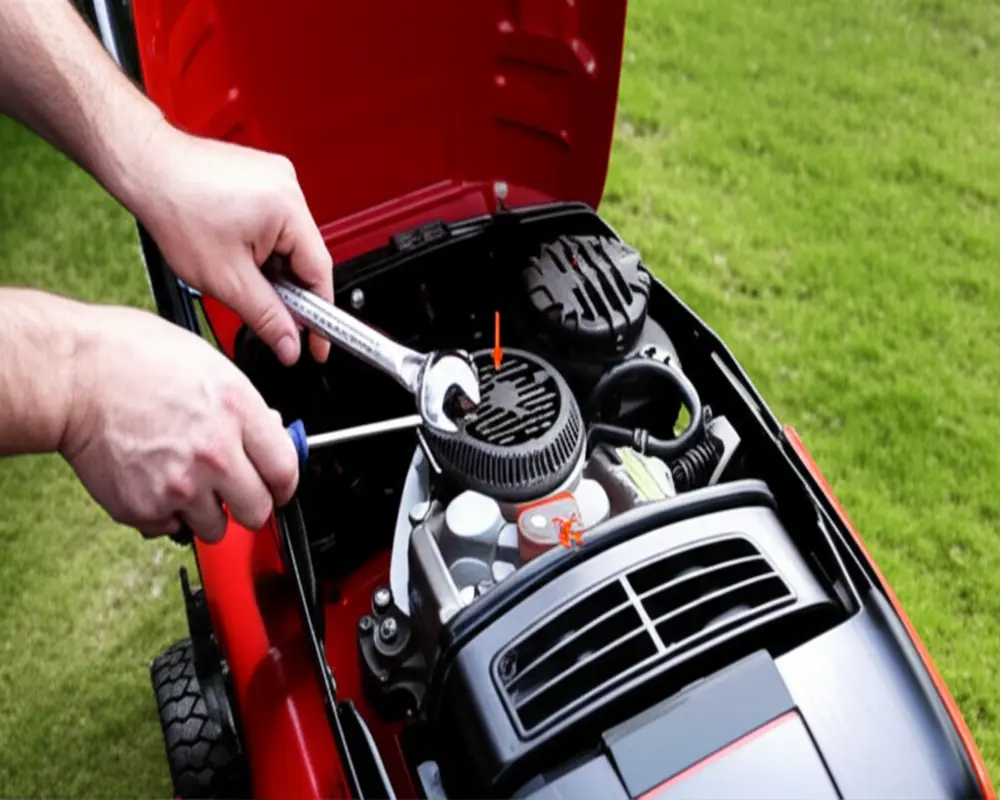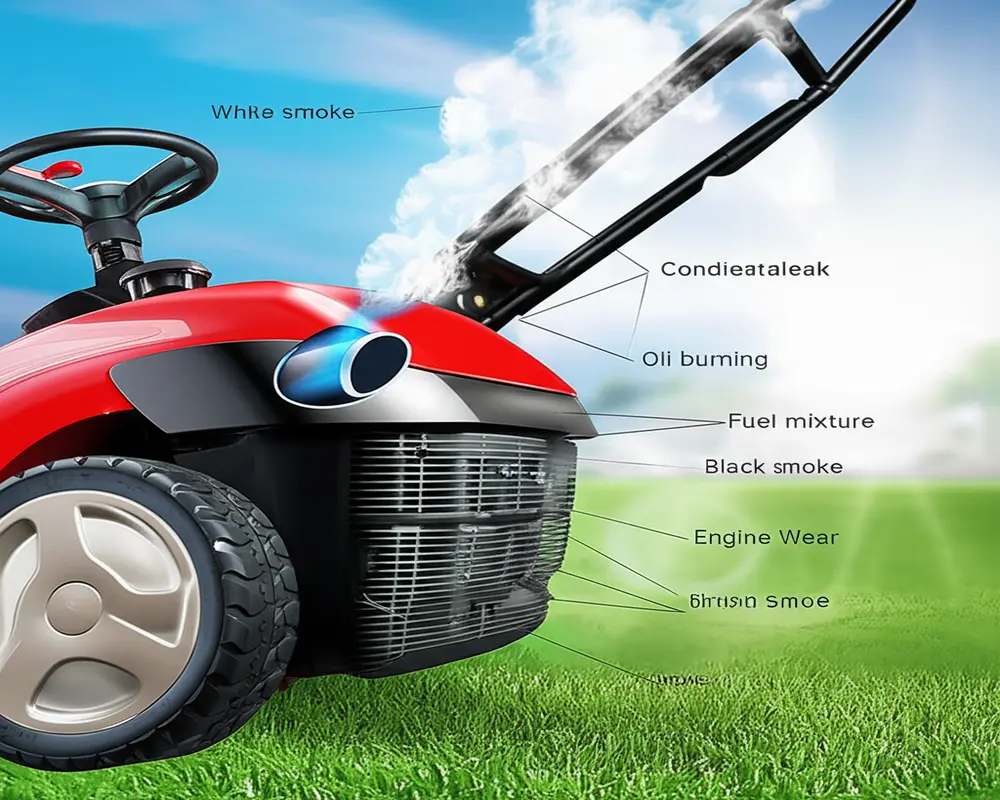The Ultimate Lawn Mower Troubleshooting Guide: Diagnose & Fix Any Issue
Lawn mower troubleshooting is an essential skill for every homeowner and gardening enthusiast. When your lawn mower falters—whether it refuses to start, smokes excessively, or cuts unevenly—it can disrupt your yard maintenance routine and add unexpected repair costs. This comprehensive guide empowers you with the knowledge to quickly diagnose common problems, understand their root causes, and execute effective DIY repairs that save both time and money.
Drawing from expert insights in small engine mechanics and outdoor power equipment, this article covers everything from basic safety precautions to detailed troubleshooting steps for engine, blade, and drive system issues. By the end, you’ll be confident in maintaining and repairing your mower to keep it running smoothly season after season.
Safety First: Essential Precautions Before You Start
Before diving into any repair or maintenance work, prioritizing safety is non-negotiable. Lawn mowers involve sharp blades, combustible fuels, and hot engines—each presenting potential hazards.
- Always disconnect the spark plug wire before performing repairs to prevent accidental starts.
- Allow the engine to cool completely to avoid burns.
- Wear personal protective equipment (PPE), including gloves and eye protection, to guard against cuts and debris.
- Secure the mower firmly when tilting or lifting to prevent falls or spills.
- Handle fuel carefully—avoid spills and store it in approved containers away from ignition sources.
- Consult your mower’s owner’s manual for model-specific safety instructions and maintenance guidelines.
General Diagnostic Checklist: Starting Point for All Issues
When encountering any issue with your lawn mower, begin with a systematic checklist to quickly identify common culprits. This initial inspection often resolves problems without needing advanced tools or professional service.
- Check the fuel level and ensure the fuel is fresh; stale gasoline can impair engine performance.
- Verify the oil level and assess its quality; low or dirty oil can cause engine damage.
- Inspect the spark plug for fouling, wear, and secure connection.
- Examine the air filter for dirt and clogging; a clean air filter supports efficient combustion.
- Clear any debris or obstructions from the blade and mower deck to ensure smooth operation.
- Confirm that all safety controls and switches are functional and properly engaged.
- For electric start models, check the battery charge and connections.
Common Lawn Mower Problems & Detailed Solutions
A. My Lawn Mower Won’t Start!
One of the most frequent frustrations is a mower that refuses to start. Careful, stepwise diagnosis can pinpoint the exact cause and remedy it efficiently.
- Fuel Status: Confirm there is sufficient, fresh fuel. Old or contaminated fuel should be drained and replaced.
- Spark Availability: Remove and inspect the spark plug for fouling or damage. Clean or replace as necessary. Check the spark plug wire and ignition coil for faults.
- Air Intake: A clogged air filter restricts airflow causing startup failure. Replace the filter if dirty.
- Compression (Advanced): Compression issues often require professional assessment but can result from a sheared flywheel key or valve problems.
Other common causes include a clogged fuel filter or a dirty carburetor, both of which can be cleaned or replaced to restore operation. Dead batteries in electric start models require recharging or replacement. Some issues, like sheared flywheel keys or valve troubles, necessitate expert repair.

For a deeper dive on lawn mower starting problems and repair approaches, refer to this detailed guide on lawn mower won’t start issues.
B. Engine Running Problems: Sputtering or Stalling
If your mower starts but runs roughly, sputters, or stalls, several factors could be at play. These symptoms often indicate fuel, air, or ignition system problems.
Common causes include:
- Dirty air filter limiting airflow.
- Blocked fuel filter or stale fuel affecting combustion.
- Carburetor jets clogged with deposits, reducing fuel flow.
- Incorrect spark plug gap or fouled plug hampering ignition.
- Low engine oil triggering automatic shutdown to protect the engine.
- Overheating from clogged cooling fins or obstructed mower deck.
- Blade or deck obstructions causing engine strain.
Addressing these issues involves cleaning or replacing filters, servicing the carburetor, inspecting and adjusting the spark plug, and ensuring proper oil levels. Maintaining a clean mower deck and cooling system helps prevent overheating and engine stress.
C. My Lawn Mower is Smoking!
Smoke coming from the mower’s engine signals underlying problems. The color of the smoke provides diagnostic clues:
- Blue/Gray Smoke: Indicates oil burning, often due to overfilled oil, worn piston rings, or valve seals.
- Black Smoke: Suggests a rich fuel mixture caused by air or fuel supply issues.
- White Smoke: Usually water vapor or fuel additives burning off; persistent white smoke may point to coolant leaks (rare in lawn mowers).
Solutions vary by smoke type. For blue smoke, check oil level and change if necessary; worn engine components may require professional repair. Black smoke calls for adjusting the carburetor and air intake. White smoke often resolves with normal operation but monitor to ensure it’s not persistent.

D. Unusual Noises from the Lawn Mower
Sounds your mower makes can be diagnostic. Here's a brief guide:
- Clunking or Grinding: May indicate blade damage, debris interference, or engine wear.
- Squealing: Often caused by slipping belts or dry bearings requiring lubrication or replacement.
- Rattling/Vibrations: Could be loose hardware, unbalanced blades, or worn engine mounts.
Address these by inspecting blades for damage and balance, tightening hardware, lubricating bearings, and checking belts for wear or tension.
E. Cutting Performance Issues: Uneven Cuts & Poor Bagging
Uneven cutting or poor grass collection can stem from several factors:
- Dull or bent blades reduce cutting efficiency and result in ragged edges.
- Unbalanced blades cause vibration and uneven cut height.
- Incorrect deck height settings lead to scalping or inadequate trimming.
- Improper tire pressure affects mower levelness and cut uniformity.
- Clogged discharge chute or mower deck hinders grass clippings flow.
- Mowing too fast or when grass is wet compromises cut quality.
Sharpening or replacing blades, balancing the blade assembly, setting the correct deck height, adjusting tire pressure, and cleaning the deck and chute restore cutting performance. It’s best to mow at a steady pace and avoid wet grass to optimize results.
F. Drive System & Belt Problems (Self-Propelled Mowers)
For mowers with self-propel functions, drive system issues include:
- Drive belts worn or slipping, causing loss of propulsion.
- Loose or damaged drive cables impairing engagement.
- Worn drive gears or pulleys reducing power transmission.
- Obstructed drive wheels from debris or damage.
Regularly inspect belts and cables, replace worn components, and clear obstructions to maintain smooth self-propel operation.
Essential Tools & Supplies for DIY Repairs
Equipping yourself with the right tools and supplies ensures efficient lawn mower troubleshooting and repairs. Common essentials include:
- Socket wrench set for removing engine covers and bolts.
- Spark plug wrench for inspection and replacement.
- Screwdrivers (flathead and Phillips) for various fasteners.
- Fuel stabilizer to maintain fuel freshness during storage.
- Carburetor cleaner for dissolving deposits.
- Engine oil and oil filter for routine changes.
- Replacement belts and spark plugs as needed.

For guidance on purchasing quality tools and supplies, explore reputable retailers and review product recommendations on GardenItemReviews.
Preventative Maintenance: Keeping Your Mower Reliable
Consistent maintenance extends the life of your lawn mower and prevents many common breakdowns. A practical maintenance schedule includes:
- Before Each Use: Check oil and fuel levels, clean the mower deck, and inspect safety controls.
- Every 25 Hours or Annually: Change engine oil, clean or replace the air filter, and inspect the spark plug.
- End of Season: Stabilize fuel with additives, thoroughly clean the mower, sharpen blades, and store it in a dry, sheltered area.
Regular upkeep ensures optimal engine performance and cutting quality while reducing costly repairs. For expert maintenance tips, visit Family Handyman’s lawn mower maintenance guide.
When to Call a Professional
While many issues can be resolved at home, certain problems require specialized skills, tools, or parts. Consider professional repair when:
- The mower has complex engine issues such as valve damage or sheared flywheel keys.
- Electrical components or wiring faults are suspected.
- Drive system gears or pulleys need replacement beyond belt or cable adjustments.
- You lack the tools or experience to perform safe and effective repairs.
Choosing a reputable repair shop involves verifying credentials, reading customer reviews, and ensuring transparent pricing. For trusted service guidance, consult Consumer Reports’ lawn mower repair recommendations.
Conclusion: Keep Your Lawn Mower Running Strong
Lawn mower troubleshooting is a vital skill that empowers you to maintain a healthy, well-groomed lawn efficiently. By understanding common issues—from starting failures to cutting inconsistencies—you can apply targeted repairs that restore your mower’s performance while avoiding unnecessary service costs.
Armed with safety knowledge, diagnostic checklists, and repair strategies outlined here, you have the tools to tackle most problems confidently. Keep your mower well-maintained to enjoy many seasons of reliable operation. Share this guide with fellow gardeners and reach out with any questions to deepen your outdoor equipment expertise.
Start diagnosing your mower today and keep your lawn looking its best all year round.

